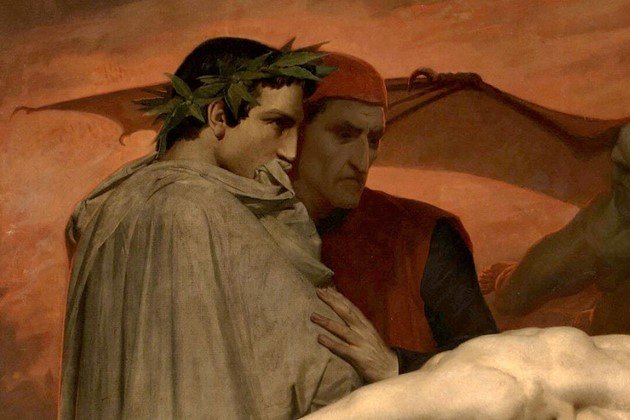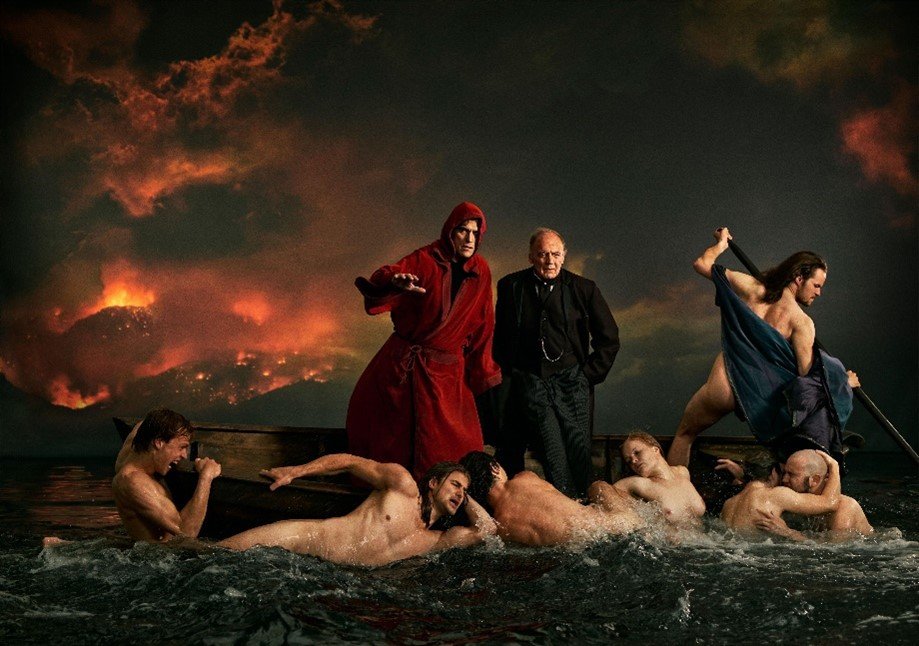Explaining a painting: "Dante and Virgil" by W. Bouguereau
Sometimes classic paintings could look like a complete mess because the plots behind them could be not so obvious for a modern viewer. One of such works is "Dante and Virgil" - a masterpiece created by French artist William-Adolphe Bouguereau in 1850.
Let’s dive deeper into the story behind the painting to figure out what is actually going on here!
Dante and Virgile, William Bouguereau, 1850.
Oil on canvas, 280.5 x 225.3 cm.
The painting in general depicts a scene from “Dante's Inferno” (or, “Divine Comedy”), where the poet Dante Alighieri is guided through the circles of Hell by the ancient Roman poet Virgil.
These two naked figures are not Dante or Virgil.
But those guys are:
What we see on the foreground – is an internal battle of 2 damned souls on eighths circle of Hell (the circle for falsifiers and counterfeiters).
One of the souls who is bitten on the neck - Capocchio, and he was a friend of Dante in his youth. Capocchio became an alchemist and learned to falsify gold and for this sin was damned.
And the second soul is Gianni Schicchi who had usurped the identity of a dead man in order to fraudulently claim his inheritance.
Bouguereau's use of light and color is particularly striking, with the warm, golden tones of Virgil's cloak contrasting beautifully with the dark, foreboding landscape around them.
The anatomy of the two figures is also impeccable, with every muscle and curve of their bodies rendered in exquisite detail. Bouguereau's skillful use of shading and highlighting brings the figures to life, giving them a sense of weight and presence that draws the viewer in.
Another interesting fact is that the painter Bouguereau with this masterpiece wanted to surpass another famous author Eugène Delacroix, who earlier painted “The Barque of Dante” based on the same Dante Alighieri's epic poem. And Delacroix’s painting was used as a reference for the movie “The House That Jack Built”, a psychological horror film directed by Lars von Trier.
In the movie, the main character, Jack, is a serial killer who sees himself as an artist, and he frequently references “The Divine Comedy” and Delacroix’s painting throughout the film. The painting is used as a visual reference in a scene where Jack drags a body through a forest, recreating the boat scene in “The Barque of Dante”.
The movie draws many parallels to Dante’s journey through Hell, with Jack’s own descent into madness and depravity serving as a modern interpretation of the themes explored in “The Divine Comedy”. The use of Delacroix’s painting as a reference serves to deepen the connection between the movie and the poem, as well as to underscore the twisted, artistic sensibilities of the main character.







